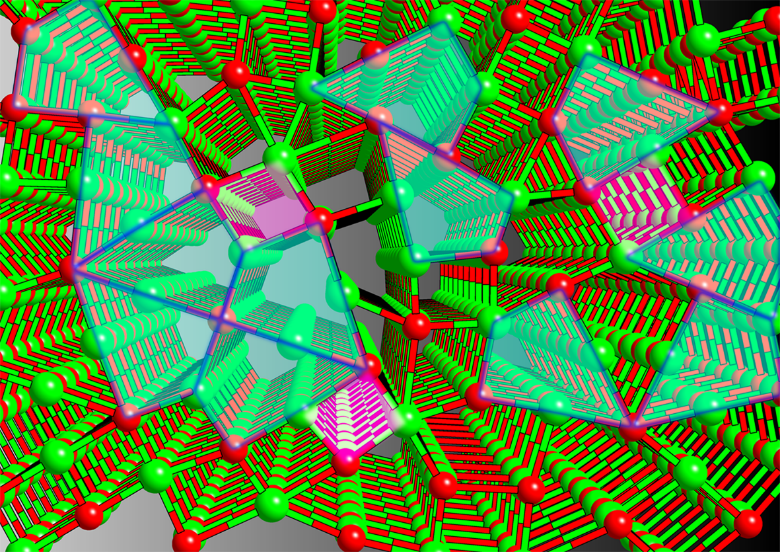Solids can generally be classified into three categories according to the crystallographic symmetry: crystal, quasicrystal, and amorphous.
Crystal has both rotational and translational symmetries in its lattice. Atoms in a crystal are arranged periodically along its three principal axes by a three-dimensional translational periodicity. Quasicrystal has rotational symmetry, but lacks translational symmetry. The atomic arrangement in a quasicrystal has a perfect long-range order, but lacks three-dimensional translational periodicity. Amorphous has neither rotational nor translational symmetry. The atomic arrangement in an amorphous lacks long-range order.
So people will wonder, is there the fourth category of solids in nature?
The answer is yes. In a recent study published in Nature Materials, an international research team including Prof. CHEN Chunlin from Institute of Metal Research, Chinese Academy of Sciences (IMR, CAS), Prof. YIN Deqiang from Chongqing University, and Prof. Yuichi Ikuhara from The University of Tokyo, reported the discovery of the fourth category of solids (i.e., one-dimensional ordered structure, or named as 1D-ordered crystal).
By combining scanning transmission electron microscopy (STEM) and first-principles calculations, the authors reported MgO and Nd2O3 ceramic phases with special atomic arrangements that should belong to a category of solids different than the three well-known categories.
The reported 1D ordered structures maintain the translational periodicity of crystals in one direction but lose the ordered atomic arrangement in the other directions, exhibiting a 1D long-range order with a translational periodicity.
Structurally, the 1D ordered structures are composed of structural units that individually have atomic arrangements similar to those observed in coincidence-site lattice configurations present at grain boundaries.
The results revealed that the physical properties of the 1D ordered structures are found to be distinct from their regular counterparts.
The discovery of the 1D ordered structures is of fundamental scientific interest and will encourage more efforts for exploring potential applications.

Figure: Schematic diagram illustrating the atomic structure of the 1D ordered structure. The atomic arrangement of the 1D ordered structure in the spreading plane is random, but the atomic arrangement in the perpendicular direction is ordered with a translational periodicity. (Image by IMR)